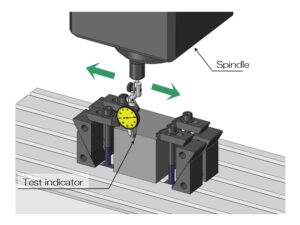012 Milling: Welcome to the 3D processing world!
1. What is the 3D processing?
This time, we will introduce 3D processing, which can be said to be the real thrill of cutting using machining centers.
What exactly is 3D processing?
I think it's easier to imagine the dimensions in cutting processing as the number of axial directions that move simultaneously.
One-dimensional machining refers to processes in one axis, such as drilling holes and machining linear grooves.
2D machining is a process that moves freely on the X and Y planes.
For example, processing such as cutting out outlines, including curves.
3D machining also includes the Z direction, meaning that all three axes can be synchronized and processed freely.
In other words, it is possible to process curved shapes.
2. Typical 2D machining example
First, let's introduce an example of typical two-dimensional machining that can be achieved by cutting.
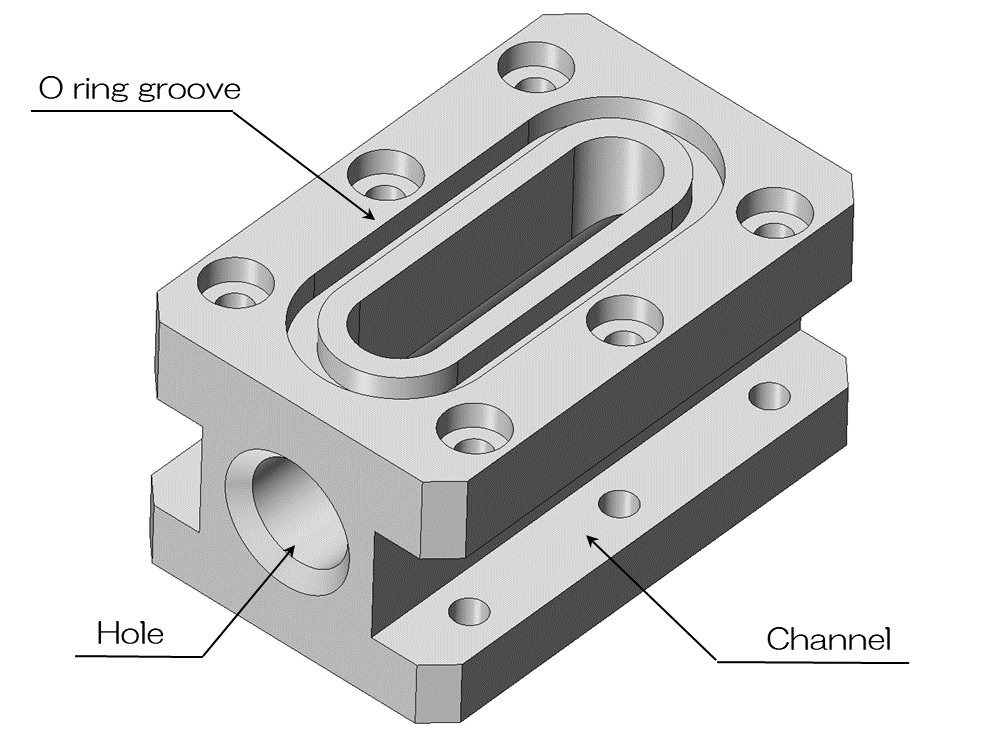
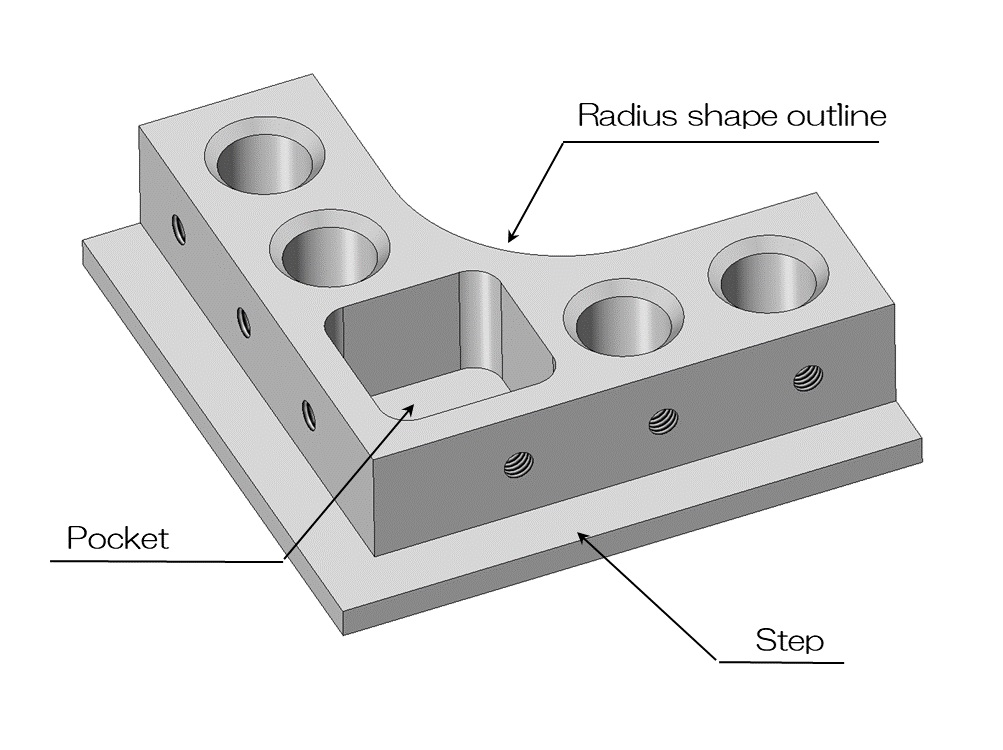
The shape shown above is a typical two-dimensional machined part.
Two-dimensional processing means that there is no change in the height direction.
In other words, when viewed from above, all machined shapes are at the same height and are perpendicular to the machined surface.
The housing on the left is also three-dimensional, but it is actually a two-dimensional machined part.
The O-ring groove also includes a curve, but the depth of the groove is constant.
It is not difficult to create an NC program for such a shape.
The same goes for the right bracket.
There are R-shaped contours and pocket shapes, but the bottom height of both is constant, so two-dimensional processing is required.
3. Typical example of 3D processing
So what kind of shapes require 3D processing?
Let me introduce some specific examples.
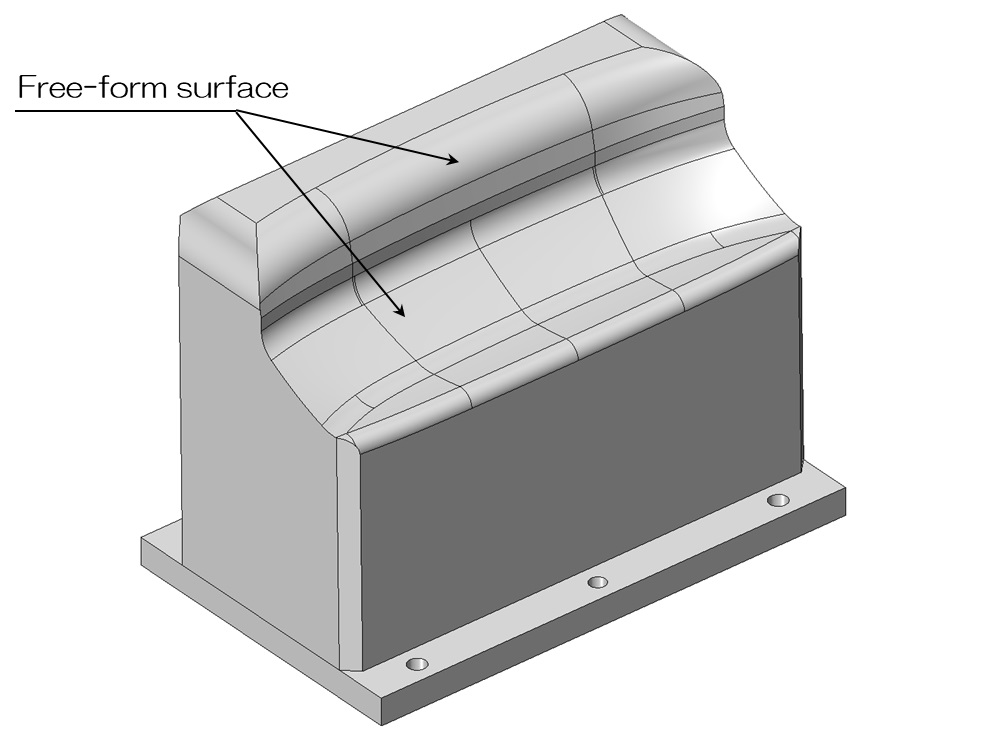

The example on the left is a jig part for receiving resin molded products.
It has a receiving shape that looks like a transcription of the free-form surface of the molded product.
Naturally, it is a curved surface that changes three-dimensionally in the height direction, so it cannot be achieved with normal two-dimensional processing.
The example on the right has a shape that resembles a typical aircraft part.
Slopes and free-form surfaces are often used to remove thickness, and diagonal holes are also often used.
Cutting parts with curved surface shapes like these are often used in specific fields.
Mold parts can also be called 3D processed parts.
In order to realize these three-dimensional machining, it is necessary to create an NC program that can freely move the X, Y, and Z axes.
It is not a simple thing that a craftsman can create by inputting it by hand, but a CAM application that supports specialized 3D processing is required.
4. Amazing 3D machining examples
Let's also introduce 3D shapes, which are a little more complicated.

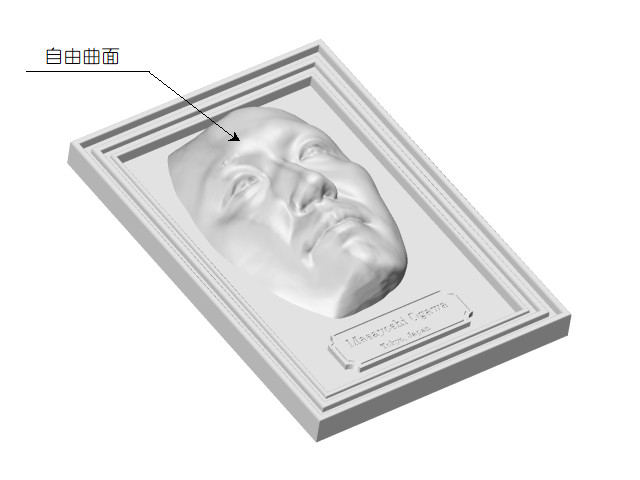
The impeller on the left is a typical 3D machined part.
There are countless twisted free-form wing shapes lined up and overlapping each other.
This kind of shape is difficult to achieve with normal 3D machining, and requires processing that dynamically moves the three axes of X, Y, and Z and the two rotational axes of A and C in synchronization, which is called simultaneous 5-axis machining. Masu.
Naturally, you will need a 5-axis machine that can perform simultaneous 5-axis machining and a CAM application that can create complex NC programs.
The relief on the right was created by scanning a human face, but we can also process shapes that consist only of free-form surfaces like this.
There are a wide variety of areas where 3D processing can be used, not only for mechanical parts, but also for decorative items and art.
We would appreciate it if you could expand the scope of your design by taking into account that this kind of processing is possible.
